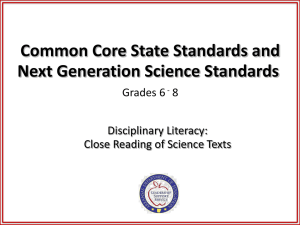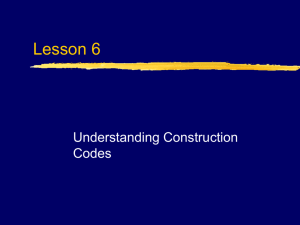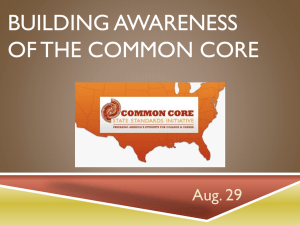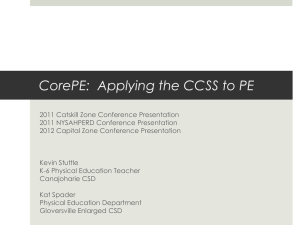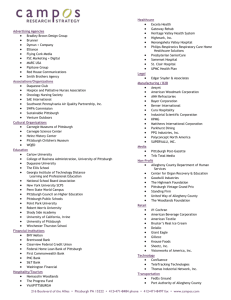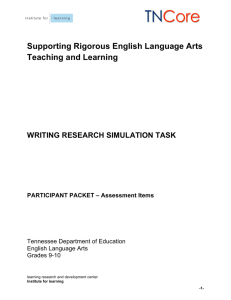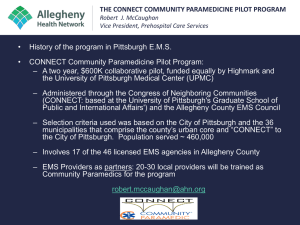Module 2: Science Research Simulation Task Analysis
advertisement
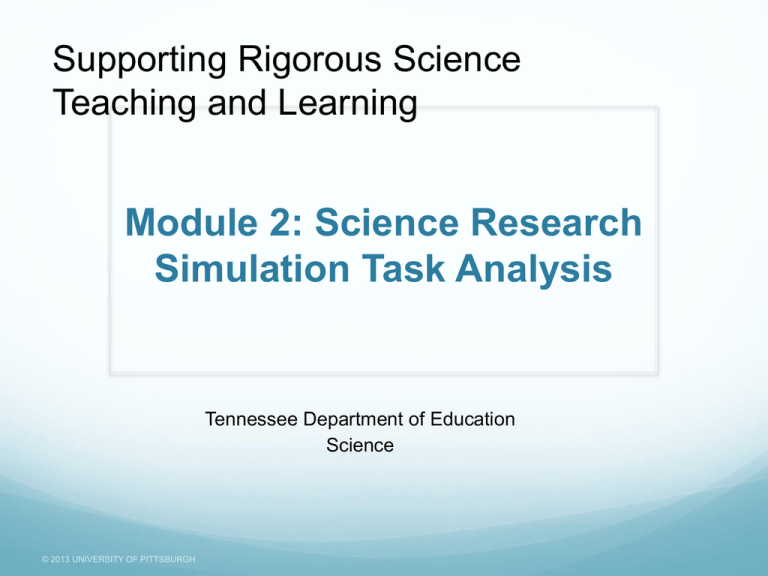
Supporting Rigorous Science Teaching and Learning Module 2: Science Research Simulation Task Analysis Tennessee Department of Education Science © 2013 UNIVERSITY OF PITTSBURGH Goals Deepen understanding of Science Research Simulation Task (RST) by analyzing and discussing Science RST connections with the Common Core State Standards (CCSS) for Literacy in Science reading and writing standards; and discussing implications for teaching and learning in science. Reflect on learning. © 2013 UNIVERSITY OF PITTSBURGH 2 Norms for Working Together Keep students at the center. Be present and engaged. Monitor air time and share your voice. Challenge with respect. Stay solutions oriented. Risk productive struggle. Balance urgency and patience. © 2013 UNIVERSITY OF PITTSBURGH 3 Task Sheet Analysis of a Science Research Simulation Task Part I—Partner Work With a partner, take about 15 minutes to do the following: 1. Share and discuss your responses to the tasks and these four questions. a. How is this assessment different from current assessments? b. How did the Science Research Simulation Task (RST) relate to the Common Core State Standards (CCSS) key shifts? c. What did you have to know and be able to do to complete each task? d. What did you find challenging? 4 Task Sheet Analysis of a Science Research Simulation Task Part II—Table Work 1. Review the Common Core State Standards (CCSS) for Literacy in Science reading and writing standards. 2. Identify and chart the specific standards assessed across the tasks. 3. When asked, share one literacy reading or writing standard you have listed. © 2013 UNIVERSITY OF PITTSBURGH 5 Task Sheet Analysis of Science Research Simulation Task (continued) Part III—Whole Group Discussion • What insights did you gain from engaging in the Science Research Simulation Task (RST)? • How does the Science RST exemplify the three Common Core State Standards (CCSS) key shifts and literacy reading and writing standards? • What do you see as implications for teaching and learning in science? © 2013 UNIVERSITY OF PITTSBURGH 6 Reflection Take a few minutes to reflect personally and/or share with a partner What one thing will you do differently in the classroom based on your understanding of this module’s content and the demands of the Common Core State Standards (CCSS)? © 2013 UNIVERSITY OF PITTSBURGH 7 Takeaways An understanding of • the CCSS for Literacy in Science reading and writing standards; and • how key shifts of CCSS for Literacy in Science are shifting expectations for science teaching and learning. © 2013 UNIVERSITY OF PITTSBURGH 8 Bridge To Practice Assignment Implement the Research Simulation Task (phase I) with your students. Collect student work and score using TCAP Writing rubric. Conduct a preliminary analysis of the data. Discuss outcomes and instructional implications with PLC. Completion of this task is vital in understanding how students may perform on the PARCC assessment. The next module involves the engaging in a rigorous science lesson with implications for teaching and learning in Science. Thank you for your time! © 2013 UNIVERSITY OF PITTSBURGH 9
